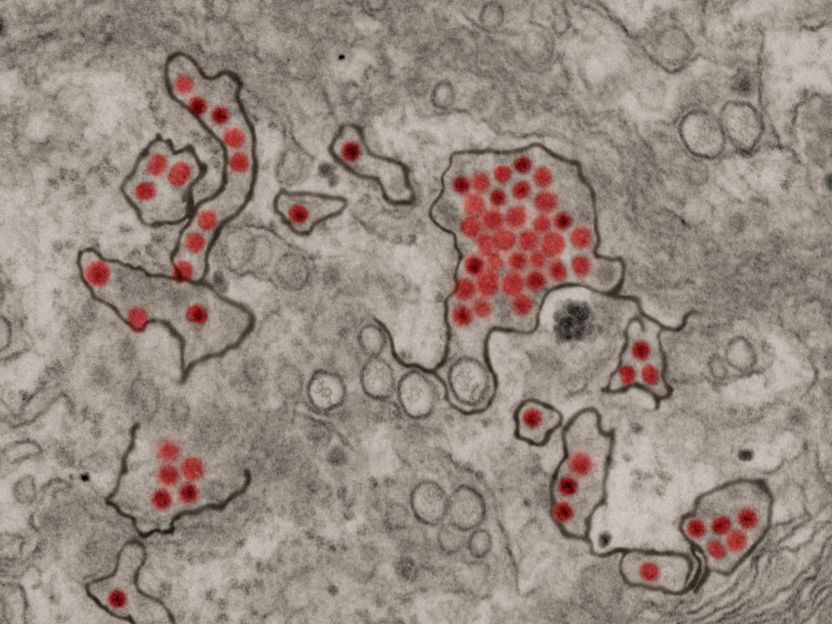Penn researchers offer new approach to treating cocaine addiction
In the ongoing fight against drug addiction, researchers from the University of Pennsylvania's School of Nursing and Perelman School of Medicine have discovered a unique application for an FDA-approved drug currently used for obese patients and type 2 diabetics: treatment for cocaine dependence.
The drug, trade name Byetta, derives from a naturally occurring hormone called glucagon-like peptide-1, or GLP-1, which regulates feeding behavior. Knowing what they did about GLP-1, Matthew Hayes and Heath Schmidt, of Nursing and of Psychiatry, and Bart De Jonghe, of Nursing, turned to it as a possible treatment for cocaine addicts.
Previously, Hayes, whose primary appointment is at the Perelman School of Medicine, had completed a GLP-1 study comparing consumption of palatable food to normal chow: as Schmidt put it, a burger and fries versus a salad. Activation of GLP-1 receptors in a specific part of the brain, according to this work, reduced intake of that burger meal but did nothing, good or bad, to salad consumption. Additionally, previous literature showed an overlap between the neural circuits that influence feeding and drug taking.
With this groundwork laid, the researchers formulated a straightforward hypothesis. "If GLP-1 regulates intake of palatable food, then perhaps it also regulates consumption of cocaine," Schmidt said. "That was it in a nutshell."
The hypothesis turned out to be true. In a two-and-a-half year study of rats, the trio showed that when they activated GLP-1 receptors in the region of the brain that deals with reward behavior, called the ventral tegmental area, or VTA, the animals self-administered less cocaine. It's the first time such a role has been shown for GLP-1 in the brain.
Physiologically, GLP-1 acts similarly in rat brains and human brains. Rather than injecting cocaine, the scientists modeled the way a human would take the drug by offering the study rats a lever to press for intravenous infusions. Once the animals stabilized in their drug-taking regimen, the researchers introduced the GLP-1 receptor agonist directly into the brain.
"We're looking at what activation of GLP-1 receptors in the VTA does to the animal's self-administration of cocaine," Schmidt said. "We were able to show a nice decrease in cocaine self-administration."
Though no human trials have been completed, something Schmidt acknowledges is still several steps away, there's one fewer barrier because of the drug's FDA approval. Clinicians have likely already heard of it, and those with a particular patient population have potentially already prescribed it. The drug, whose side effects are known, has already been proven safe for human use.
Getting to human clinical trials would go a long way toward meeting a long-term goal for Schmid. "Our interest is really to understand how chronic exposure to drugs of abuse changes the brain to produce addiction-like behaviors," said Schmidt, who has also authored another similiar paper, about nicotine and a potential smoking-cessation medication.
To move forward the GLP-1 project specifically, Schmidt said the team plans to next focus on the pathway it follows in the brain.
"That gets into a systems neuroscience approach, into the circuitry underlying the behavior," he said. "It's really provocative.... We talk about the VTA and the reward circuit that drives cocaine taking. But there's also this pathway that cocaine is activating that's functioning as a 'brake' to try and stop or reduce the behavior."
There are more pieces of the puzzle to solve. But, if this research continues to progress successfully, those working to treat cocaine addiction may soon have another option in their toolkit.
Original publication
Heath D Schmidt, Elizabeth G Mietlicki-Baase, Kelsey Y Ige, John J Maurer, David J Reiner, Derek J Zimmer, Duncan S Van Nest, Leonardo A Guercio, Mathieu E Wimmer, Diana R Olivos, Bart C De Jonghe and Matthew R Hayes; "Glucagon-Like Peptide-1 Receptor Activation in the Ventral Tegmental Area Decreases the Reinforcing Efficacy of Cocaine"; Neuropsychopharmacology; 2016






















































